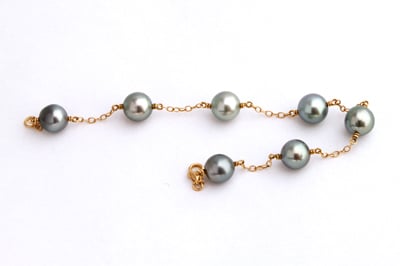Tahitian Pearl Buying Guide
Josh Humbert operates a black-pearl farm called Kamoka Pearls on the atoll of Ahe, 300 miles northeast of Tahiti in the Tuamotu island chain. Here, it can take up to five years before a pearl matures into a ready-for-the-necklace jewel. Josh knows exactly what the real deal looks – and even tastes – like, and he explains the science of selecting the perfect pearl.
1. Tooth Test
This really works with pearls. Gently rub a pearl across the front of your teeth. A real pearl will feel slightly abrasive, whereas a fake pearl made of a plastic composite will be smoother.
2. Light Test
It's best to view the pearl indoors, in a room with white walls and a white ceiling, so you can see the vibrant colors. The next best thing is diffused light, like on a foggy day or at dusk. Direct outdoor sunlight makes Tahitian pearls appear to have less of their color and depth.
3. Sight Test
Real Tahitian pearls come in a never ending combination of naturally occurring colors that truly span the entire rainbow. They are the only pearl type that can boast this amazing array of colors and personalities.
**4. Best Value******
To find the best deal, get as close as possible to the source where the pearl came from. A big-store retailer in Chicago is a long way, and a lot of steps, from the pearl farm. For online shopping, be sure to get third-party evaluations of the vendor from social media.
Enter to win a Tahitian Pearl bracelet from Kamoka Pearls here.
